


Pan American Energy is a company admired and respected for its values and principles, committed to operational excellence and quality while respecting the highest standards in terms of health and safety of people and the environment, and the integrity of our assets.
Our strategic vision for growth is based on continuous improvement, innovation, evolution and sustainability, which are inherent to our identity as an organization and define us as a company that is reliable and socially responsible in its relations with clients, government, partners and the communities where we operate.
This Operations Management Model (MGO) is a set of related policies, processes and requirements which leverages a common and standardized language to guide our operations systematically and efficiently.
Those of us who work in or are related to Upstream operations are responsible for complying with it.
The MGO helps us channel the passion that unites us to transform our leadership and capacity into energy to guide society to grow.
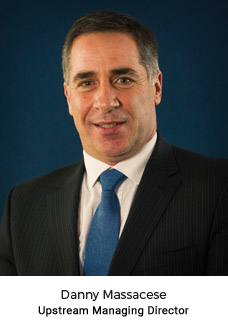
which introduces the key concepts of the MGO, as well as its elements, principles, expectations and governance.
which contains guidelines for the implementation, improvement and governance of the MGO.
which which regulate the operations of each Vice Presidency and, especially, their development.
- Promote the integration of all the areas of the Organization sharing a common goal.
- Minimize risks incurred by staff during operations.
- Minimize environmental impact.
- Protect asset integrity.
- Increase the reliability of operations.
- Optimize the use of resources.
- Achieve credibility, reliability and acceptance of PAE and its projects on the part of local communities and society in general.
- Employees at all levels of the Organization to understand the spirit of the MGO and comply with it, as well as with their corresponding MSs.
- Middle-managers to promote, guide and supervise such compliance within their respective departments.
- Each area’s VP to develop, enforce and enhance their MSs.
- The Governing Body of the MGO should assess the MGO performance and promote its improvement.
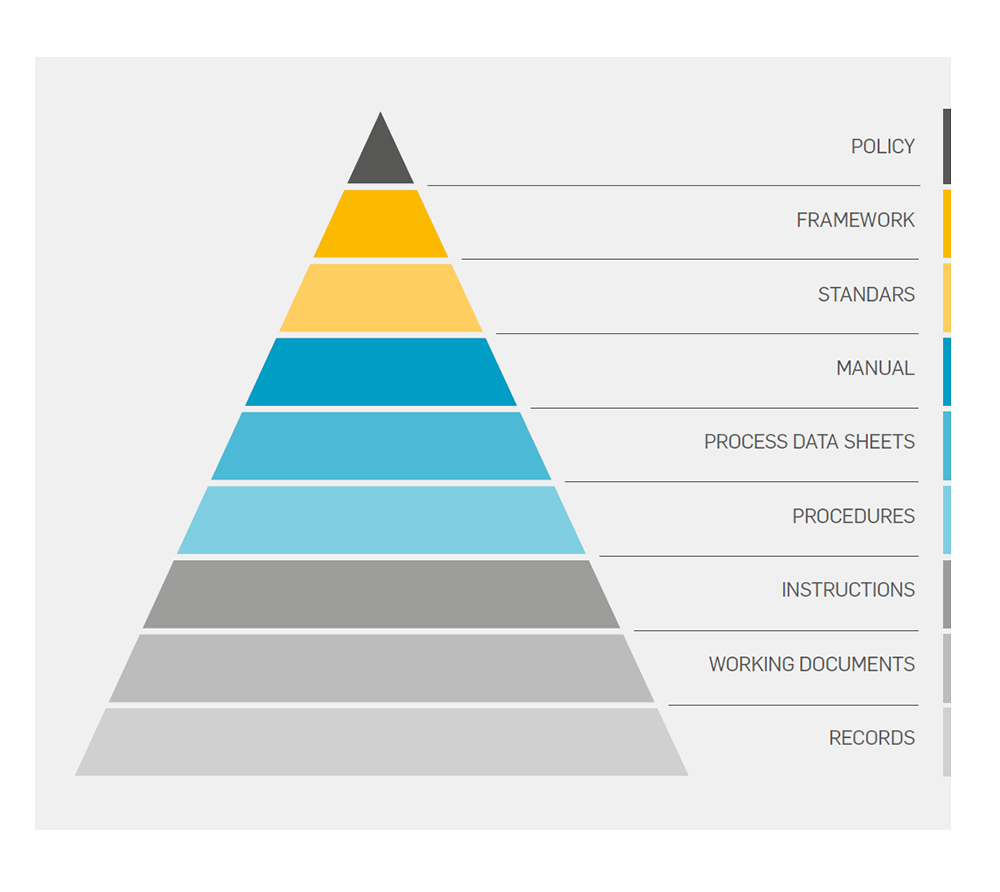
It is worth noting that the MGO Requirements are included not only in this document, but also in the rest of the documents that make it up.
The MGO is supplementary to the applicable legal Requirements.
PAE defines Operational Excellence (OE) as a high standard of performance that requires all efforts to be aligned with our strategies, and the Organization’s employees to demonstrate an operational behavior that maximizes the Company’s value.
The main goal of the MGO is that each person within the Organization develops his/ her activities in search of the Operational Excellence.
Operational behavior means carrying out their tasks in a deliberatively correct manner, each and every single time, always.
The effort to achieve OE is a long-term journey that starts off by complying with the Requirements and goes on indefinitely towards continuous improvement. And continuous improvement can only be achieved if cultural factors are given the appropriate attention.
Therefore, we promote values, behaviors and standards in line with this goal. We encourage our leaders to be proactive and to lead by example, thus emphasizing their commitment to OE. Moreover, we seek to continuously improve our employees’ skills in order to ensure that their commitment translates into individual and collective value.
While the search for OE reaches all aspects of operations, its adequate orientation allows a faster improvement in those areas that are key to the business and to the communities where it is developed.
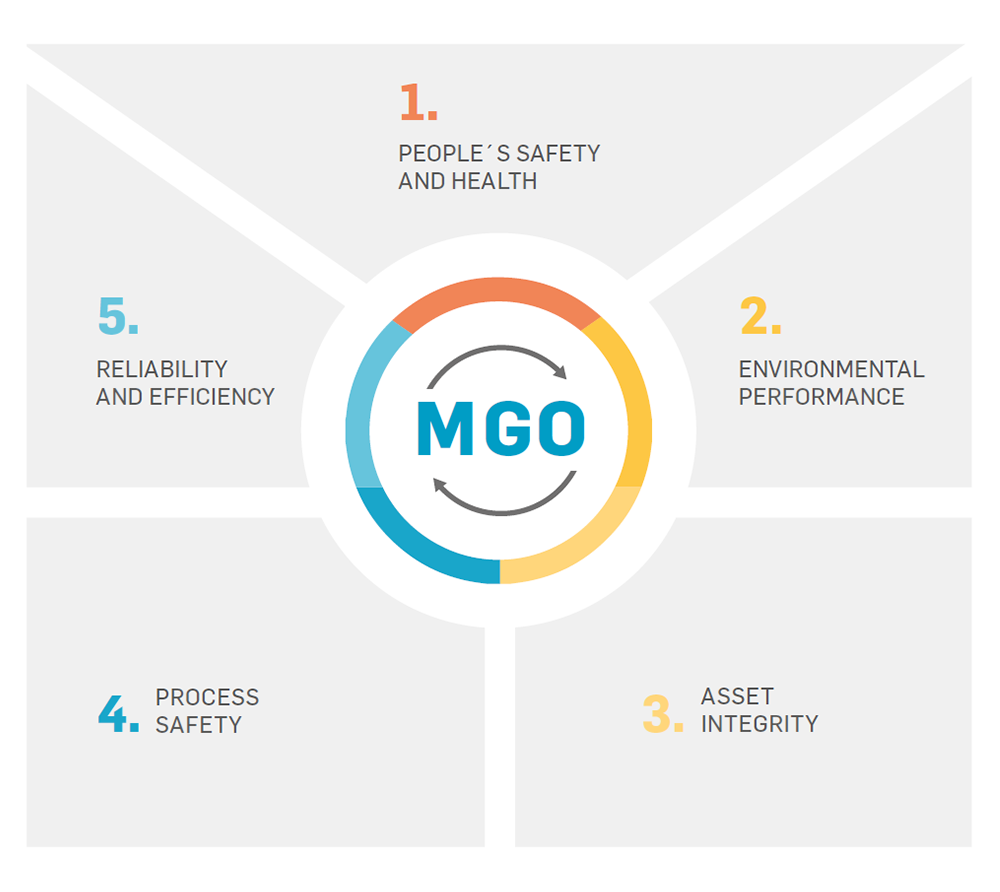
PAE's five OE Focus Areas provide a guideline for setting priorities relating to complying with Requirements and seizing opportunities for improvement.
The continuous improvement consists of making positive changes through sustained individual and collective efforts, rather than through specific actions.
In order to align these individual and collective efforts and develop synergy between them, the MGO requires the application of an improvement cycle comprised of the following steps:
1. Assessment: Identifying opportunities for improvement and potential gaps between operations and expectations, setting priorities and defining the actions required to bridge such gaps.
2. Planning: Arranging the implementation of the actions defined and the applicable control mechanisms.
3. Implementation: Carrying out the actions defined according to the plans developed.
4. Control: Determining the level of effectiveness of the actions implemented and the level of compliance with the plans previously developed.
5. Review: Senior Management is responsible for making regular reviews in order to analyze process performance and identify opportunities for improvement.
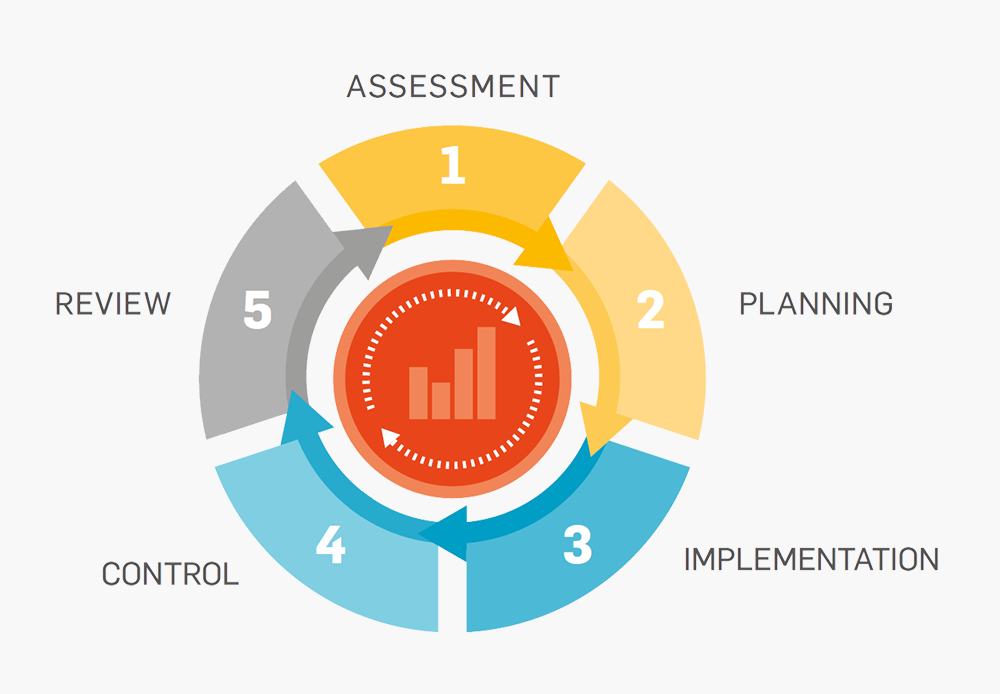
In order to promote continuous improvement and the sustainable development of our operations, PAE has adopted a Risk-Based Thinking and Management-By-Process approach.
By applying risk-based thinking, risk becomes an essential part of the process, and results in a proactive approach to determining the factors that could make processes or MS deviate from planned objectives, minimizing negative impact and making the most out of the opportunities that arise.
THE CHARACTERISTICS THAT DEFINE THE MANAGEMENT-BY-PROCESS APPROACH ARE AS FOLLOWS:
- Identification of key operational processes.
- Clearly identified input and output, and well-defined indicators for every process.
- Identification and assessment of risks and opportunities, approaching them in a way that increases the efficiency and effectiveness of the MSs to achieve better results and prevent negative impact.
- Systematic application of the continuous improvement cycle to processes and the interdependencies between processes.
- End-to-end improvement of the system as a result of individual process improvement.
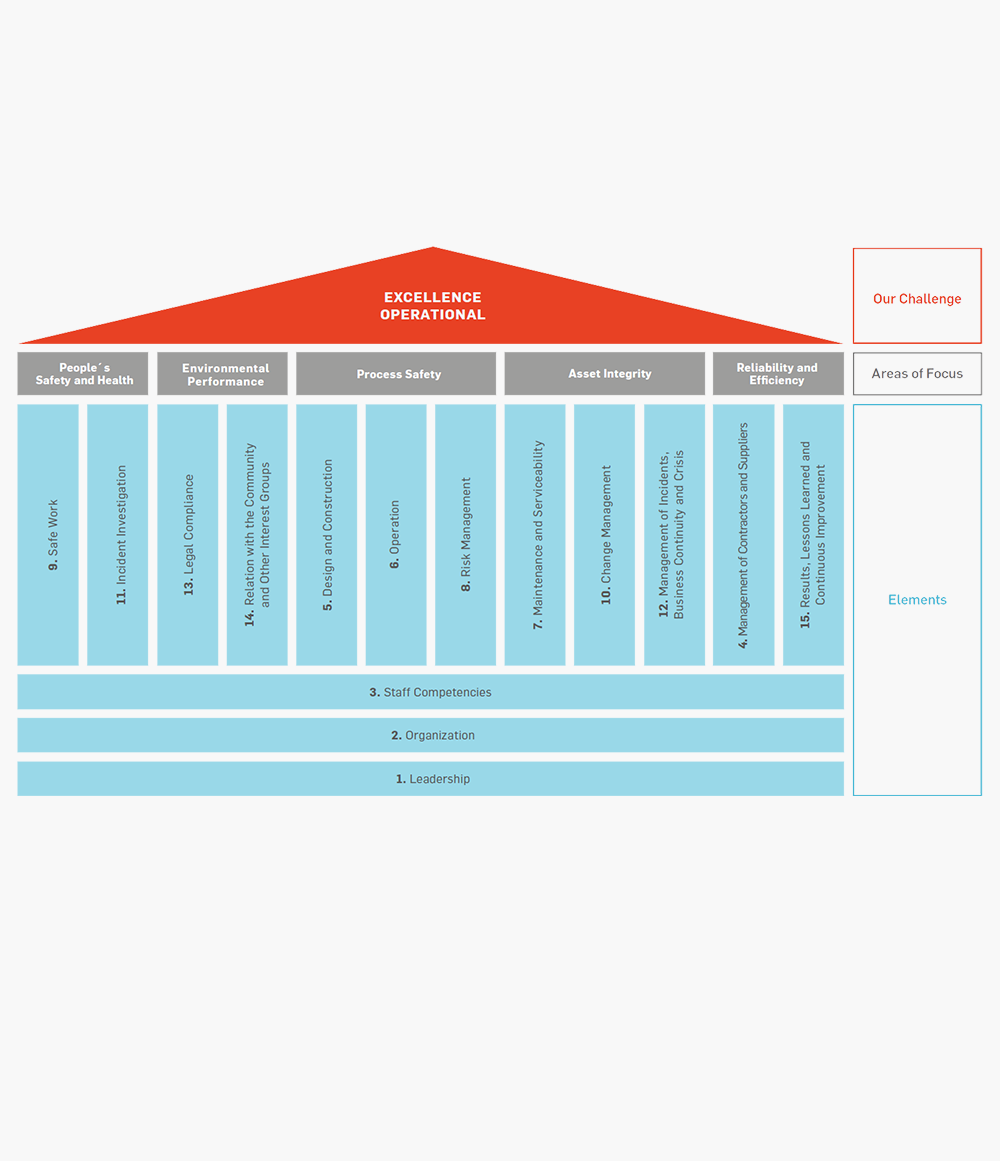
Expectations translate into essential and highly challenging corporate Requirements, and are classified into 15 interdependent elements.
Each element represents one highly significant operational aspect and is related to a principle that defines its purpose. In the absence of specific Requirements, the principles underlying the element may be used to support the decision-making process.
- Ensure the compatibility between the MGO and the Company’s vision, strategy and policies
- Ensure the effectiveness, efficiency, quality and transfer of good practices.
- Regulate the implementation, assessment and improvement of the MGO.
- Asses and approve the use of MSs in different areas of the Organization.
- Assess/ and approve implementation plans and monitor their progress.
- Evaluate the performance of operations regarding the MGO, requesting reports or conducting audits.
- Identify and request adjustments to the MSs in order to comply with MGO Requirements, standardize management processes and operational practices, or develop links between different MSs.
- Report to the UMD the performance of operations regarding to the MGO.
- Recommend improvements to the MGO to Senior Management.
- Keep the Sustainable Operation policy and the MGO Framework, Manual and procedures updated, and communicate modifications to all interested parties.
- Identify the need to develop or modify corporate standards, managing the Required actions and approving such standards.
- Promote the understanding of MGO Requirements and provide guidelines and advice to ensure compliance.